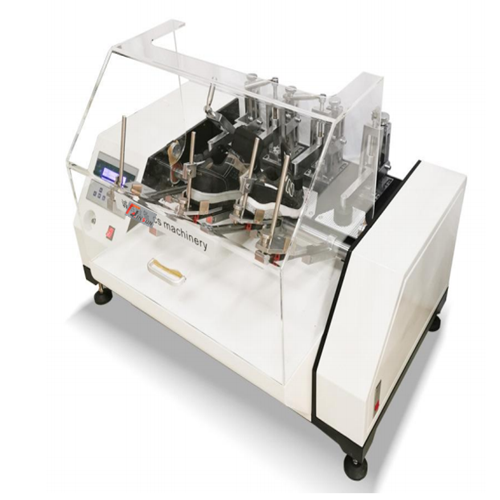G650D Finished shoe bending tester (heel lift)
G650D Shoe Bending Tester (Heel Lift): Assessing Footwear Flexibility
The G650D finished shoe bending tester evaluates heel lift and sole flexibility under repeated bending cycles, critical for ensuring footwear durability and comfort. This article details applicable standards, technical specifications, operating principles, and test methodologies for manufacturers prioritizing quality control.
Applicable Standards
The tester complies with footwear flexibility test standards, including:
- ISO 17707:2005 (Footwear — Flexing tester)
- SATRA TM176 (Flexing resistance of shoe soles)
- QB/T 2673-2013 (Chinese standard for heel lift in finished shoes)
Main Parameters
| Parameter | Specification |
|---|---|
| Bending Angle | 0-90° (adjustable) |
| Test Speed | 30-60 cycles/min |
| Load Force | 50-200N (programmable) |
| Cycle Counter | 0-999,999 times |
| Power Supply | AC 220V/50Hz |

Working Principle
The tester uses a motor-driven mechanism to simulate walking motion, applying cyclic bending forces to the shoe’s heel. A load cell measures real-time force, while displacement sensors track bending angles. The system automatically stops at preset cycle limits or when sole cracks exceed thresholds.
Test Principle
- Sample Preparation: Secure the shoe to the fixture, aligning the heel with the bending axis.
- Parameter Setup: Define load force, bending angle, and test duration via digital interface.
- Automated Testing: The machine flexes the shoe repeatedly, recording force-displacement data.
- Result Analysis: Evaluate sole cracking, heel lift, and energy loss to assess compliance with flexibility standards.
This tester enables manufacturers to predict long-term footwear performance, reducing warranty costs and enhancing user satisfaction. Its adherence to international standards and robust data logging capabilities make it a vital tool for footwear quality assurance.

